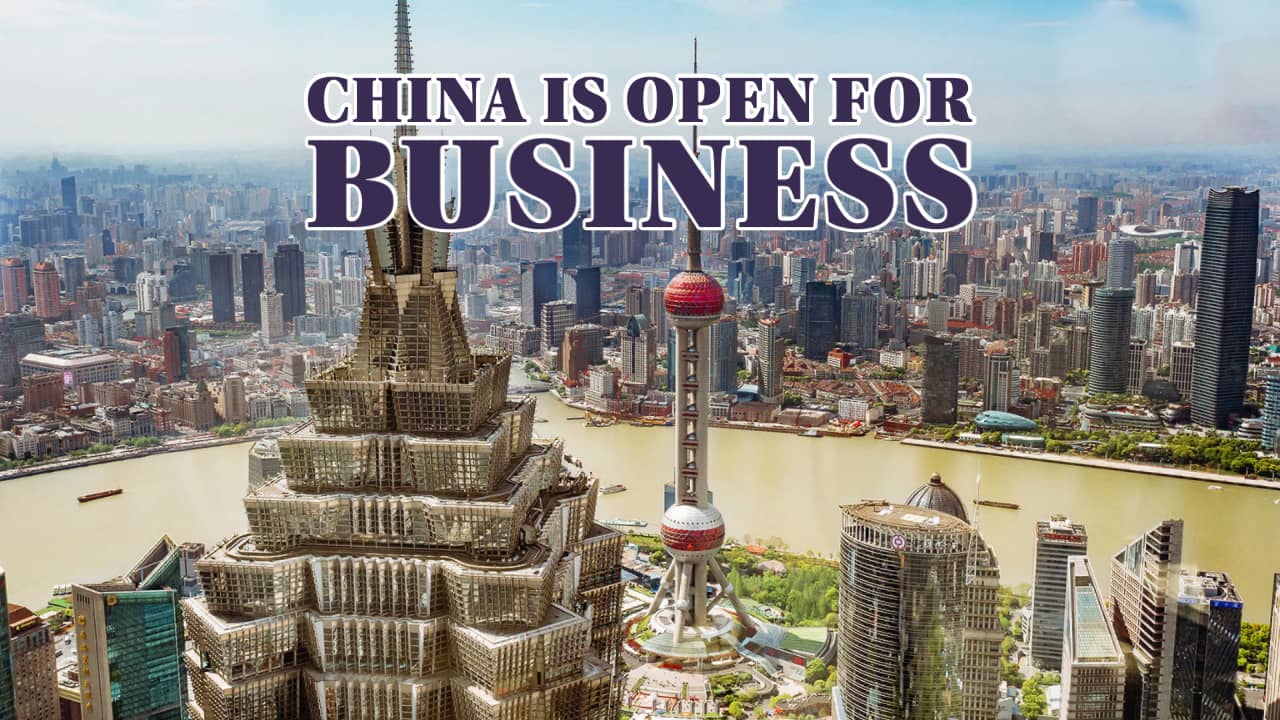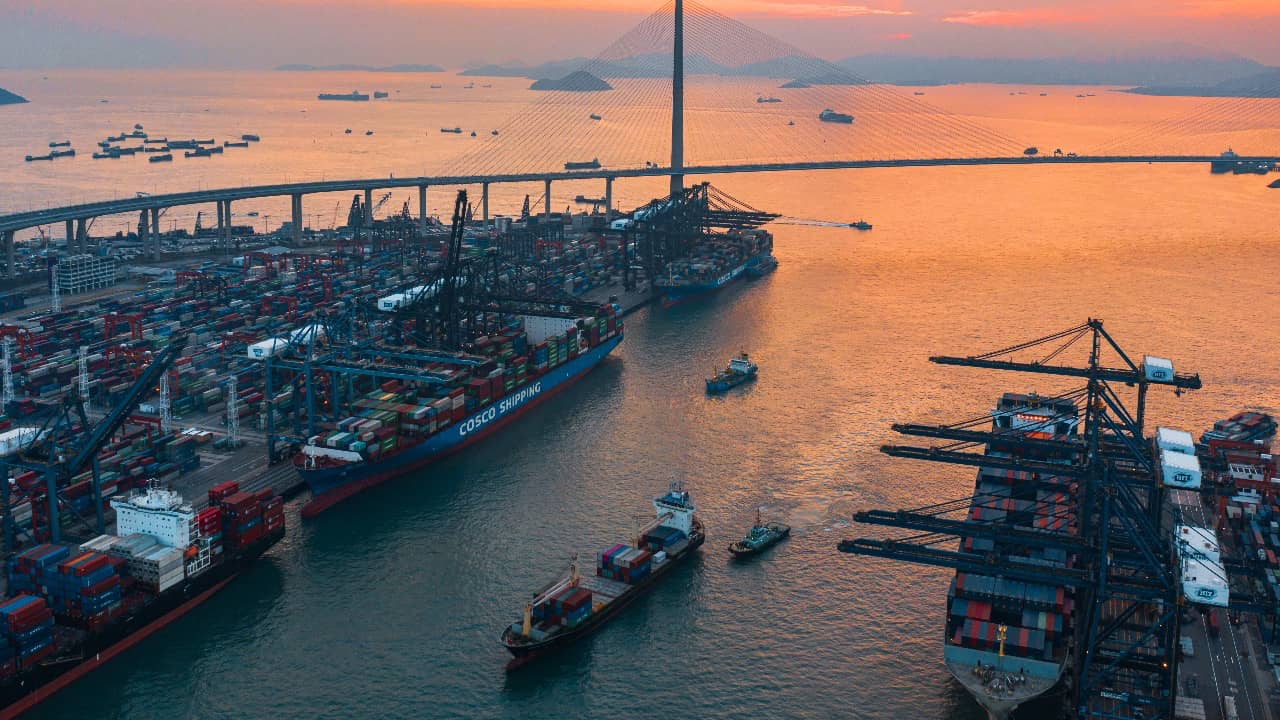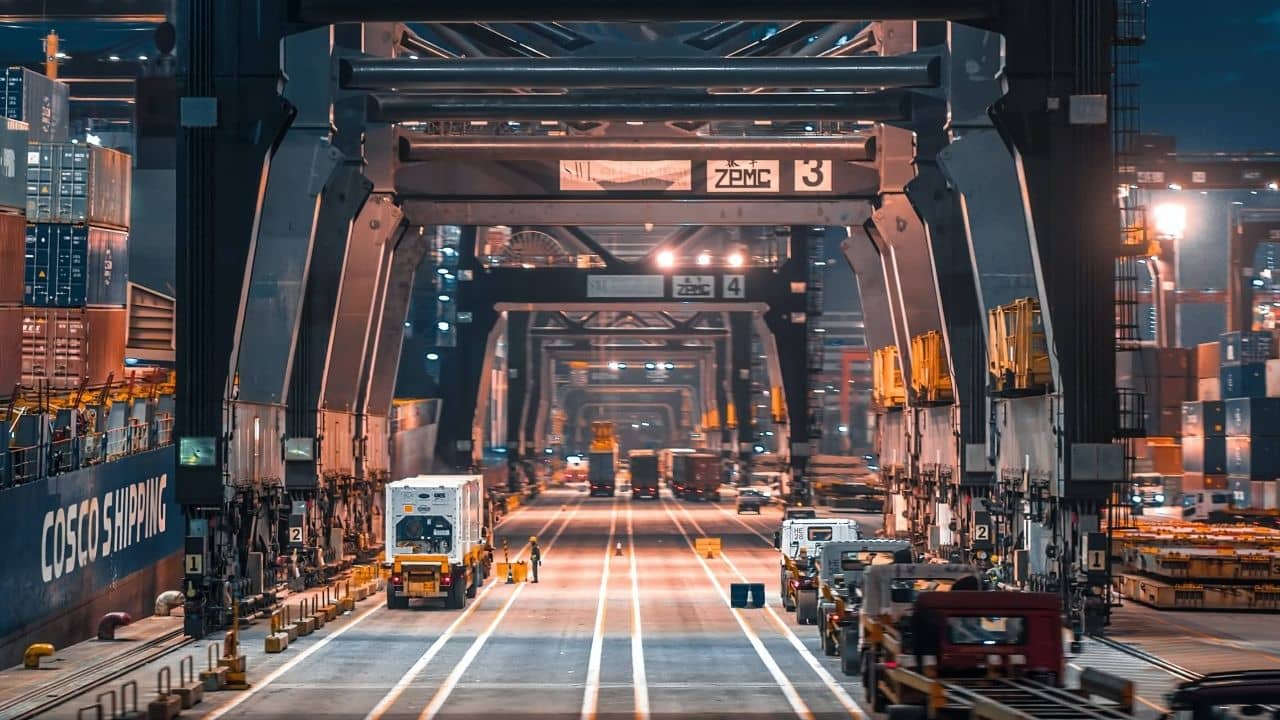
China’s Abandonment of Zero COVID Policy and What It Means for Importers and Exporters
10-minute read
Today we’re looking at that strange time of shipping and logistics year when traditionally, ahead of factory closures for the Chinese New Year holidays, we see a spike in air and ocean demand and freight rates.
But will tradition mean a thing in 2023? How long will factories stay closed?
And what does the unwinding of China’s zero COVID policy mean for manufacturers, international travel, air cargo and shipping supply chains, both in the coming weeks and in the year ahead?
Mike King: Today, we’re looking at the Chinese New Year. The official holiday starts on the 22nd of January.
But how long factories will stay open is a matter of much debate.
What is clear is that the analytical waters couldn’t be muddier in 2023 as the lunar new year approaches.
I’m not just talking about recessions in key import markets in Europe, the US and elsewhere.
We are already hearing reports of rising consumer spending.
Many international and regional border controls have been swept away.
Prices for inputs into manufacturing processes, such as copper and oil, have also risen on projections of greater demand from China.
On the flip side of this, a healthcare crisis looms as the pandemic is allowed to let rip.
How serious this is, is hard to confirm because reliable numbers are scarce, but we know that vaccination rates among the elderly are low.
The healthcare system was not prepared for this quick policy change, which means how all this might play out and how disruptive it might be to labour availability, supply chains and manufacturers is shrouded in doubt.
Could you please set the scene of what’s it like in China for everyone?
Steve Saxon (McKinsey & Co, Shenzhen): It’s been an absolute rollercoaster for a few weeks.
The announcement that China would move away from the zero COVID policy and live with it was a massive surprise.
Certainly, how quickly COVID has then spread and how quickly the restrictions have come down has been a huge surprise.
75% plus of the population in the major tier-one cities has had COVID, and it is spreading rapidly across the rest of the rural areas as well.
That’s causing a huge healthcare crisis as we speak, and that’s got to be foremost.
We hear stories of significant numbers of deaths and hospitalizations. China’s healthcare systems are not strong.
So as we talk about supply chains today, we need to recognize this in the context of a humanitarian challenge.

Mike King: Are you anticipating supply chain disruptions in the next few weeks ahead of factory shutdowns for the Chinese New Year from the 22nd of January because of this healthcare crisis as COVID spreads?
And if so, how long will this likely continue, as far as you can tell?
Steve Saxon: The short answer is no. It’s done. It’s history.
The COVID spike was at the end of December and the first week of January.
It spread at China’s speed. At that point in time, factories were having challenges.
Maybe 40-50% of workers in some weeks were out with COVID. They all caught it now, and they’re all back to work. So the factories we know of, the trucking, the ports, the supply chain are working normally here.
Mike King: As a result of this China’s opening and abandonment of zero COVID policy, has McKinsey changed its view of China’s economic outlook in 2023? What do you think this means for international trade in terms of demand?
Steve Saxon: It has to be positive for demand. First of all, it improves domestic confidence.
People are more comfortable going out and spending money, visiting malls and shopping.
So that should get the domestic economy moving again.
We saw the borders open, so international air travel is now possible again.
That’s going to invigorate trade as well.
People can visit their suppliers, and the suppliers can go out now. That will help as well.
Mike King: In terms of the supply chains, we’re already seeing signs of increasing prices for some import commodities on the perception that demand from China will increase.
Are you expecting exports to increase later on in the year?
Steve Saxon: Exports are mostly demand-driven rather than supply-driven.
China has the supply ready.
The question is going to be the global economy.
What happens with inflation? What happens with the share between consumer spending on goods versus services?
We saw a significant shift towards goods during the COVID, but then the pendulum swung back towards services in the last six months.
We shouldn’t be projecting a significant spike in exports but more of a moderate growth.

Mike King: Are China’s airports ready for a bounce back in demand now that quarantine regimes for international travellers have largely been dropped?
Is that still a concern for you?
Steve Saxon: The airports and the airlines here are ready to come back. The aviation regulation here required that all airlines retrain their pilots by the 6th of January this year.
More than 200 wide-body aircraft, essential for both passenger and cargo transport, are ready to go from the Chinese airlines.
Unlike airlines and airports in Europe and the US, there were no significant layoffs.
About 90% of those airport ground workers still have their jobs.
China is ready to come back quickly with air capacity.
The question is demand on the passenger side.
Demand will likely be slower to return than we saw when Hong Kong dropped its quarantine restrictions.
That’s causing much friction for Chinese people to travel internationally.
China stopped renewing passports for the last two years, so around 20% of the population doesn’t have a valid passport.
They’re now issuing those again, but that takes a few months.
Then visas, most Chinese people need visas to travel internationally, and again that takes a few months to follow through.
So, by this summer, we’ll see a significant ramp-up in air capacity. Before that, it will be gradual.
Mike King: Presumably, this has quite a significant impact on the global air cargo picture.
Steve Saxon: It does, of course. Historically, half of all global air cargo is carried in passenger aircraft bellies.
China is one of the few markets in the world where the volume of exports is so high that it demands greater aircraft.
Anyone who’s been able to fly freighters into China in the last few years has made very nice pockets.
The return of the bellies will naturally add capacity and, therefore, should push pricing back down, making it more affordable for shippers.

Mike King: We’ve heard many different analyses of what Chinese policy would be regarding COVID.
Are you saying no healthcare crisis could develop that would see a return to zero COVID policy? Is this done and dusted?
Steve Saxon: It’s impossible to put this back in the bottle now.
When Shanghai had 10s of thousands of cases, we lived through a lockdown of 2.5 months, when we couldn’t leave our homes. Through doing that, China managed to return to zero cases.
But there are now millions of cases every day. It’s impossible to clamp back down on that and get back to zero.
Mike King: When might we see that dreaded phrase of a return to normal?
Will China go back to a pre-COVID place in the world? Or have the world and geopolitics changed too much for that to happen?
Is China still as attractive now for investors or those sourcing products as it was a few years ago?
Or will we see that reshoring and nearshoring impact China’s place in the world, particularly as an exporter?
Steve Saxon: China is still by far the best manufacturing location for the vast majority of products.
The expertise in manufacturing is here.
There’s still labour availability.
There’s nowhere else which is close to being as competitive as China.
That said, back in 2019, everyone was talking about the diversification of supply chains because of risk issues at that time.
It was driven by tariffs and trade wars.
During COVID, we actually saw manufacturing move back to China.
China did a better job keeping supply chains moving during 2020-2021 than some other countries.
Ironically, we saw manufacturing ship back to China, but diversification is now on every agenda.
It’s not being driven by cost.
It’s not being driven by a lack of capability in China.
It’s purely driven by risk diversification.
So depending on the industry, people are looking at Southeast Asia, India, and South Asia, and in some cases, nearshoring, but that’s rarer.

Mike King: China is open for business. We’re going to see Chinese carriers backing international markets pretty soon.
Will we see a much more normal air freight market?
Neel Jones Shah (Air strategy and carrier development, Flexport): We are seeing softness in the market from a macro perspective.
We’re not seeing any huge surge in demand before CNY.
At the same time, we’ve seen some capacity come back into the market.
The usual holiday cancellations of freighters have been reinstated. So, overall a challenging airfreight environment.
Mike King: Is there any chance of a bounce back in demand just ahead of the 22nd of January cut-off?
Neel Jones Shah: I don’t see many signs of a meaningful bounce.
We may see an uptick as we head into the holiday, but to be honest, many shippers are already closed for the holiday.
Mike King: What’s the situation on the ground at the moment in China?
Are the airports ready for a lot more cargo and planes as that economy opens up?
Neel Jones Shah: It’s good to see China open up.
They’re dealing with a surge of COVID cases that the rest of us have spent the last three years dealing with.
We believe they will be ready as volumes and capacity come back.
The majority of the capacity that re-enters the market will be in the form of passenger airplanes.
Freighters have been there through the pandemic.
As passenger volumes ramp up, the airports are ready to handle that volume, certainly the large tier 1 airports.
We expect over the course of 2023 to see more and more passenger capacity added back into the schedules both for Chinese and international carriers.
Mike King: What does that extra belly capacity mean for the global supply-demand cargo balance?
Neel Jones Shah: Belly capacity has been critical for overall supply-demand.
Back to pre-pandemic, bellies, on a global basis, provided 50% of the total capacity, so they’re an extremely vital component.
As more belly capacity enters the market, it will give shippers and forwarders more options. It’s going to give more direct options and probably keep a lid on rates.
We anticipate that demand will increase, but trying and forecast beyond the next three to six months gets super difficult, given the market conditions we have right now.
I’m looking out three to six months, and it still looks like a buyers’ market right now.

Mike King: Air cargo rates are much lower than we saw during the COVID years, but they are still significantly above pre-COVID norms. Will the supply-demand balance push rates further down back to those pre-COVID levels?
Neel Jones Shah: No, I don’t think we’re going back to pre-COVID levels on rates.
Those pre-COVID rates are unsustainable in today’s cost environment. Jet fuel prices are significantly higher than pre-COVID. Even though crude has come back down, the refining spread has risen significantly, so jet fuel prices are considerably higher than pre-COVID.
That’s a cost that needs to be borne by the carriers and hence the forwarders and the shippers.
Also, inflation of other costs, pilot costs, landing costs, and everything consumable in the business has increased. Inflation has been the headline for the past two years, so I don’t think we’re returning to pre-COVID rates.
I think rates will settle between 35 and 50% higher than they were pre-COVID.
That’s the right level where the industry can enjoy long-term viability and overall consistent margin performance for asset owners, forwarders, and shippers.
Mike King: Air cargo during the COVID benefited to a degree because there was very little space available on ships, the prices went through the roof, and the reliability was woeful.
I don’t say the reliability is brilliant right now, but obviously, spot rates have fallen off a cliff more or less on the shipping side.
Have you seen a migration of cargo back to the ocean?
Neel Jones Shah: The ocean market has definitely fallen back to pre-COVID levels.
The spot market rates are now very low. Contract rates are starting to follow a very similar trend. Reliability has improved.
Transit times are down as well. The ocean is a good deal right now.
Any shipper that can utilize ocean services is doing so.
Why would you pay for air freight rates if you can get a reasonable transit time and it can meet the needs of your business on the ocean?
So I don’t anticipate a surge of air moving to the ocean.
Whatever should be on the water has been moved to the water.
Right now, we’re seeing traditional air freight stuff that was never on the water before, and it’s not going to be on the water in the future.
I have really high hopes for the fourth quarter of this year.
I think it could be really strong, particularly as inventory levels get worked down, and people start feeling better about their future.
I think we’re going to start to see some demand coming back, and the end of 2023 and 2024 could be quite robust.

Mike King: Traditionally, the Chinese New Year provided a mini peak for shipping.
ONE CEO, Jeremy Nixon, said that China’s factories might close for as long as four weeks for the CNY.
He predicted a soft Q1 quarter elsewhere.
We had all the carriers talking up the market.
Evergreen tried to hike up some rates on the Transpacific in late December.
There are also reports of congestion at some Chinese box hubs, possibly linked to rising COVID infections.
What’s going on? What are shipping lines up to?
More importantly, what should customers be expecting in the next few weeks?
Peter Sand (chief analyst, Xeneta): Carriers tried what they could but failed miserably as they pushed for general rate increases across the board.
We saw a little bit of uptake on some of the trades, but it faded.
Abolishment of the zero COVID policy in China is a game changer.
Things can still get worse in China, from a public health perspective and a manufacturing industry perspective, as we will see workers not being at the factories due to COVID infections.
We’re expecting that the export out of China will be hammered for a considerable time, and the COVID situation is likely to top the Chinese lunar new year traditional disruptions.
There is no massive rush for shippers worldwide to get more goods in.
The traditional peak season can be called off to some extent.
Mike King: Are you expecting more blank sailings beyond the Chinese New Year?
Peter Sand: That would be the first tool carriers would reach for in their toolbox. In satellite view, we will hit rock bottom before some sort of recovery.
Mike King: We’re already looking into the year’s second half, summer peak season and improvements from the big buying economies.
Peter Sand: This year will be where the capacity injection due to the easing of congestion and a low demand level will definitely favour global shippers.
Our expectations for volumes this year will likely be in the negative territory between 0 and minus 2.5 percent.
We are definitely in a year where carrier capacity management will be the prime tool to prevent them from losing a lot on the spot market.
Source: The Loadstar Podcast. The podcast transcript was edited for clarity.
P.S. Easy Freight Ltd helps New Zealand importers & exporters to save money on international freight and reduce mistakes by guiding how to comply with Customs and biosecurity rules.
➔ Contact us now to learn how we can assist you.
